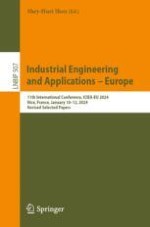2024 | Book
Industrial Engineering and Applications – Europe
11th International Conference, ICIEA-EU 2024, Nice, France, January 10–12, 2024, Revised Selected Papers
Editor: Shey-Huei Sheu
Publisher: Springer Nature Switzerland
Book Series : Lecture Notes in Business Information Processing
